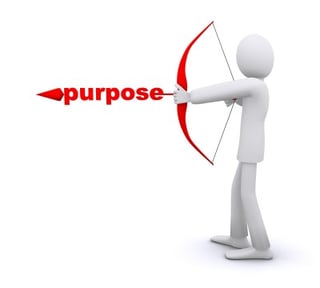So you have got your website up and running, you have created  valuable content, and your going to take the industry by storm.
valuable content, and your going to take the industry by storm.
There's only one problem.
You are not getting the viewership your oh-so-valuable content deserves. Having great content does not do much good if no one is reading it.
So how do you make your content more appealing and increase your viewership?
You could start by adding images. Images help make your content and website more appealing to your target audience.
However, there are right ways of doing this, and there are wrong ways.
Let's take a look at five strategies you can implement right now to effectively use images to grow your website.
5 Image Strategies to Grow Your Website
1. Use Images to strengthen your brand.
It is important to remember that each page of your websi te is an extension of your brand. Whether the page contains a blog post, a product offer, or your company's contact information, every page should follow a general theme and have synergy.
te is an extension of your brand. Whether the page contains a blog post, a product offer, or your company's contact information, every page should follow a general theme and have synergy.
This concept also applies to the use of images on your pages. The images you use need to be relevant to your brand message. This can mean things such as color scheme, using your logo, or the type of image.
Do you use the same style of graphics to convey different types of data? Are your images clear and concise? Do they have synergy with the rest of my content? These are all questions you should be asking yourself when deciding if images will strengthen your brand.
2. Use Images to increase readability and create structure.
 The second step to follow to properly use images is to use them to increase the readability and structure of your pages.
The second step to follow to properly use images is to use them to increase the readability and structure of your pages.
Think about it. We have all been to websites before that we thought were going to provide us with exactly what we are looking for, only to immediately hit the back button to return to the comfort of our search engine page and begin looking elsewhere.
Most of the time when this happens, it is because the page is, well, ugly. Images help to prevent this issue by creating a user-friendly, readable page that has structure.
"It is a fact that people view and respond to images before they do the same with text."
Placing the right images in the right places helps to guide your reader to the text and begin their engagement process with your content.
3. Use Images that Illustrate a point.
 Imagine you click on a page to read an article about how to get in shape for summer, and the first image you see right under the title is of a giant, juicy cheeseburger. Probably not the best choice for this content right?
Imagine you click on a page to read an article about how to get in shape for summer, and the first image you see right under the title is of a giant, juicy cheeseburger. Probably not the best choice for this content right?
Using images is important for your website, but it is just as important to remember to have a purpose for each one.
Use your images to add value to your content, not to just take up space. Accompanying images that have value to your text will help readers better understand your content.
Types of images that really emphasize this point are graphics such as tables, pie charts and graphs. However, not everything has to be about numbers and data. Helping your reader visualize your message with pictures creates more meaningful and memorable content.
4. Use images that are relateable to your audience.
 Remember what this is all about. Your website and content aren't for you, they're for your audience. That means that your images need to relate to who they are just as much as they need to relate to your content.
Remember what this is all about. Your website and content aren't for you, they're for your audience. That means that your images need to relate to who they are just as much as they need to relate to your content.
In order to do this effectively, use your target market as your starting point. Are they men? Women? Or both? Are they young, middle-aged or seniors?
"Once you have the answers to these questions, you can begin to search for images that they will find appealing and have lasting power."
For example, if your company's main purpose is to provide consumers with do-it-yourself tax software, you probably wouldn't use an image of a child playing outdoors. Instead, you might use an image of a middle-aged person sitting in front of a computer.
Using this strategy will help your visitors feel like the content was written for them and increase the likelyhood that they will return.
5. Use images that trigger the right emotional response.
![]() Whether we are aware of it or not, every image that we see elicits some kind of emotional response. The same is true for colors. Some make us feel calm and relaxed, others can create discomfort or agitate us. Being aware of this is important when considering what image to use.
Whether we are aware of it or not, every image that we see elicits some kind of emotional response. The same is true for colors. Some make us feel calm and relaxed, others can create discomfort or agitate us. Being aware of this is important when considering what image to use.
Let's take a look back at the tax software company. They may decide to use relaxing and calming images on their product like beach scenes to provide comfort to their target audience during what is generally a stressful time of year.
When they discuss doing taxes on your own, maybe they add in an image with bolder colors that is more chaotic. The emotions that these images evoke should be used as a tool that you can adjust as you lead them through your website.
5 Image Strategies and Beyond
Using images in your content and on your web pages is a great way to grow your website. Images can help to strengthen your brand, increase readability and create structure, illustrate important points, relate to your audience and trigger emotional responses.
Following these 5 image strategies will help to lay a solid foundation to effectively use images on your website.
Still Want More?
Check out some of our top blog posts on growing your companies online presence and brand:




